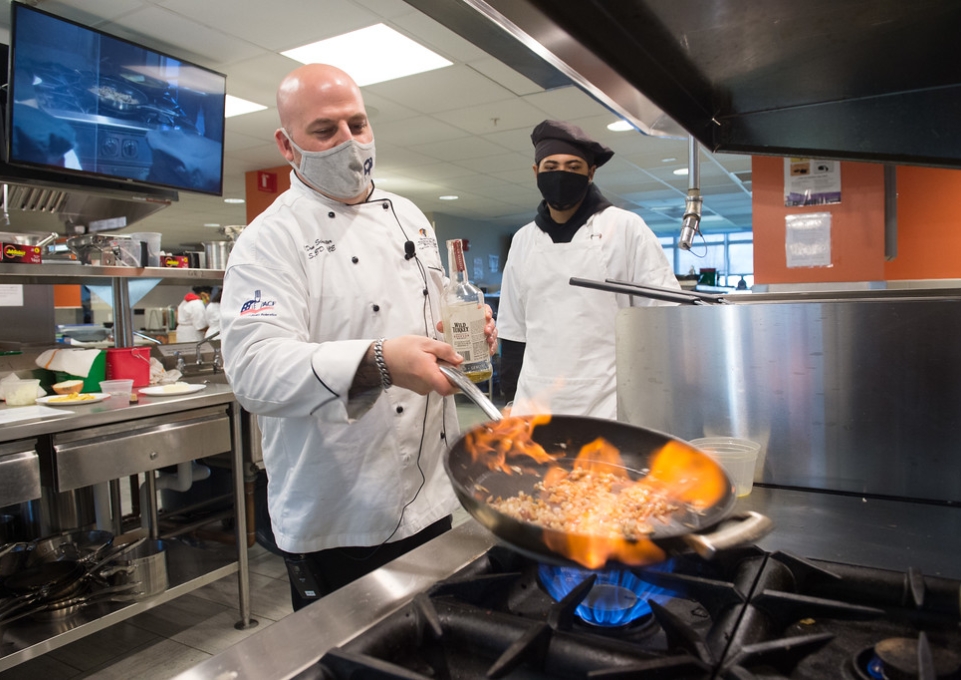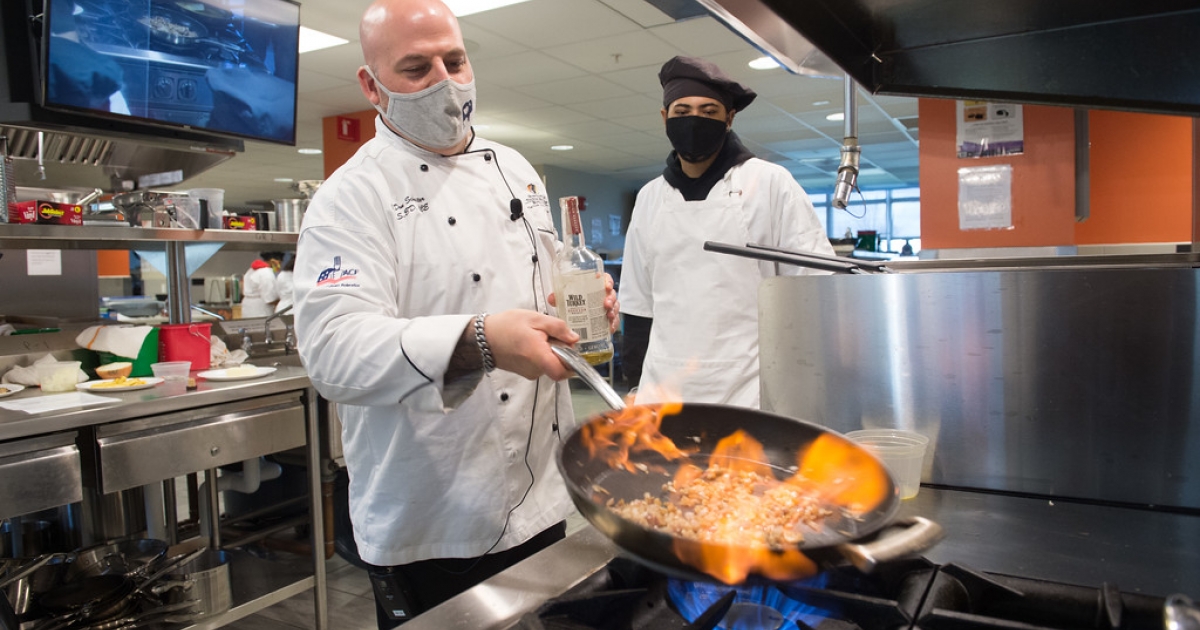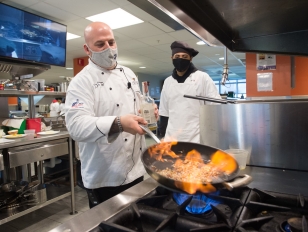
Ghost kitchens may sound spooky, but they’ve actually served as a savior of sorts. During the coronavirus pandemic of 2020–2021, when restaurants were closed to in-person dining or had to significantly reduce capacity, chefs could still create and present their signature dishes. Those dishes were just delivered to homes rather than a roomful of tables. Restaurants used either their existing kitchens or a smaller rented space to make this shift.
Even though COVID-related restrictions are becoming a thing of the past, ghost kitchens aren’t disappearing anytime soon, according to Don Schmitter, lecturer in Buffalo State’s Hospitality and Tourism Department. Schmitter explains some of the factors playing into ghost kitchens’ popularity.

Name: Donald “Don” Schmitter
Title: Buffalo State College Lecturer of Hospitality and Tourism
Schmitter earned a bachelor’s degree in food systems management in 1997 and a master’s degree in career and technical education in 2008 from Buffalo State College. He joined the faculty in 2000, specializing in culinary arts, and was hired full time in 2017. He serves as the faculty adviser to the campus’s Culinary Club and Catering Club and oversees all student-catered events. In addition, he’s currently the executive chef at Asbury Pointe, an independent living residential facility in Getzville, New York, and previously served as executive chef at the Red Coach Inn in Niagara Falls.
When did ghost kitchens begin?
This trend actually started a couple of years ago, before the start of the pandemic. Ghost kitchens are a spin-off of pop-up businesses, which have gained in popularity in recent years. It’s a way to do business efficiently and differently. They require less staff and less space. You not only don’t have a dining room, you also don’t have a lobby, so your mortgage or rent is less expensive.
A related trend is ghost items—dishes available for delivery only. This creates a buzz, enhanced by social media. If you direct people to an app to order food only available for takeout, they see other menu items you’re promoting and learn more about the restaurant. And you do this without spending any advertising dollars.
What role did the pandemic play in the trend?
Ghost kitchens really flourished during the pandemic, when restaurants had to shift to delivery service to stay afloat. Food delivery services increased a crazy amount during the pandemic, and I don’t see the trend going away. I think it will flatten out, but people will continue to want food delivered at least some of the time. And restaurants have become more adept at doing it. Restaurants, especially fine dining, have figured out ways to make their dishes look good even in the packaging, and they’re using better packaging that keeps the integrity and heat of the food during transport.
What other factors added to the ghost kitchen phenomenon?
Some full-service restaurants don’t have the staff to operate as they did pre-pandemic. As a member of the American Culinary Federation, I hear this from almost every chef I talk to. They can’t find the workers. In a ghost kitchen, you might have three or four staff members making the meals, compared with 15 workers in a full-service operation. Part of this dilemma is due to government unemployment benefits equaling or exceeding what restaurant workers were making. To cope, some restaurants are having to reduce their menus. In the retirement facility where I’m the executive chef, our menu has been reduced from four pages pre-pandemic to two.
What do you see as the future of dining?
Many people are vaccinated and feeling a lot of relief. They’re ready to dine in restaurants, go to bars, socialize as they did previously. But restaurants are still struggling. While minimum wage has increased, the cost of everything from meat to plastic gloves has gone up, too. Restaurants have to do something to make up those costs. You can only raise prices so much or you lose customers. Other options are shrinking portion sizes, reducing the number of items on the menu, and cutting back on hours of operation.
Restaurants need to continually pivot to stay relevant. They didn’t sit on the sidelines and wait for the pandemic to end. They can’t wait for unemployment to sort itself out or the price of goods to go down. Food service has always been a competitive market, and it’s become even more so today. Relying more on delivery and takeout is one way to achieve that.
Photo by Bruce Fox, campus photographer.



